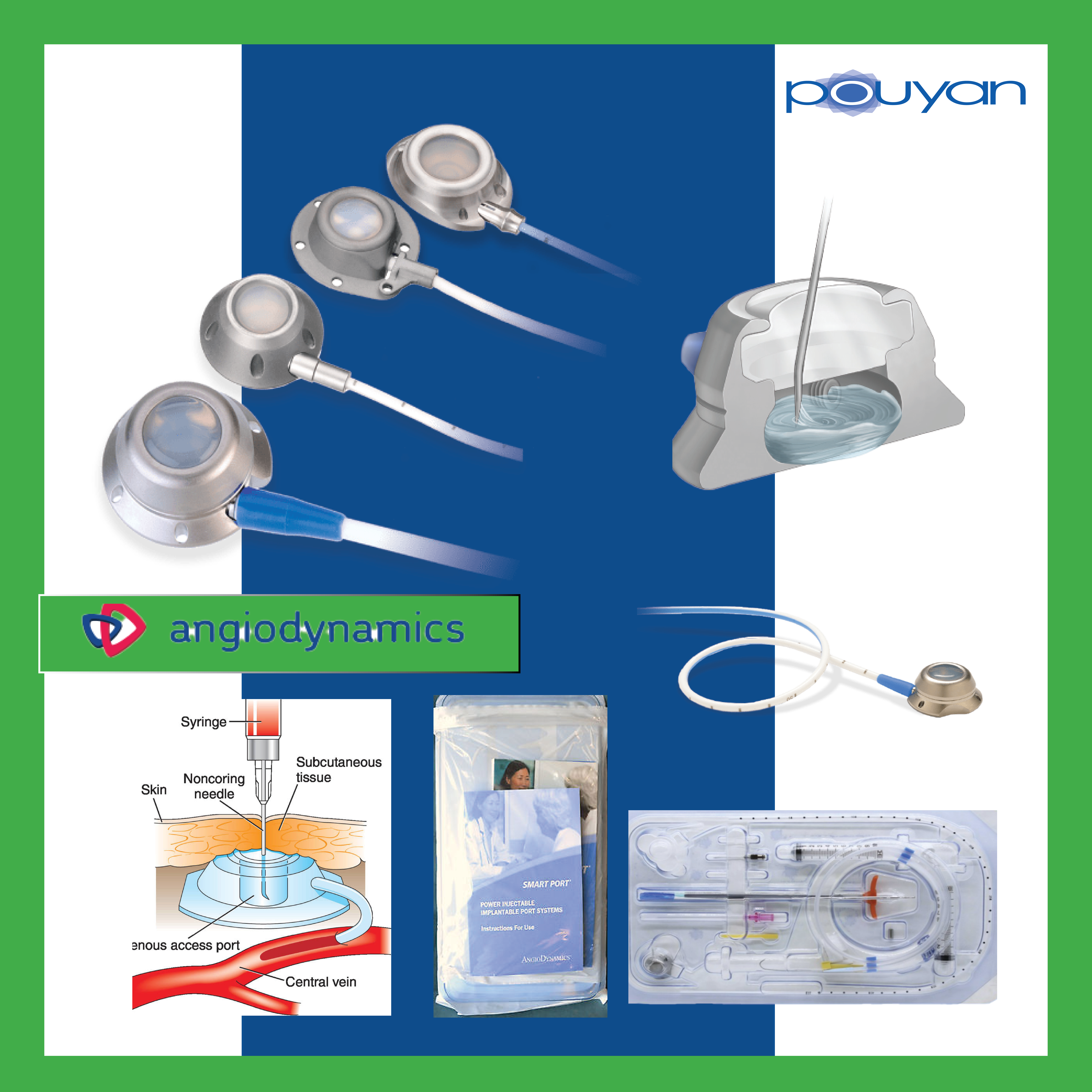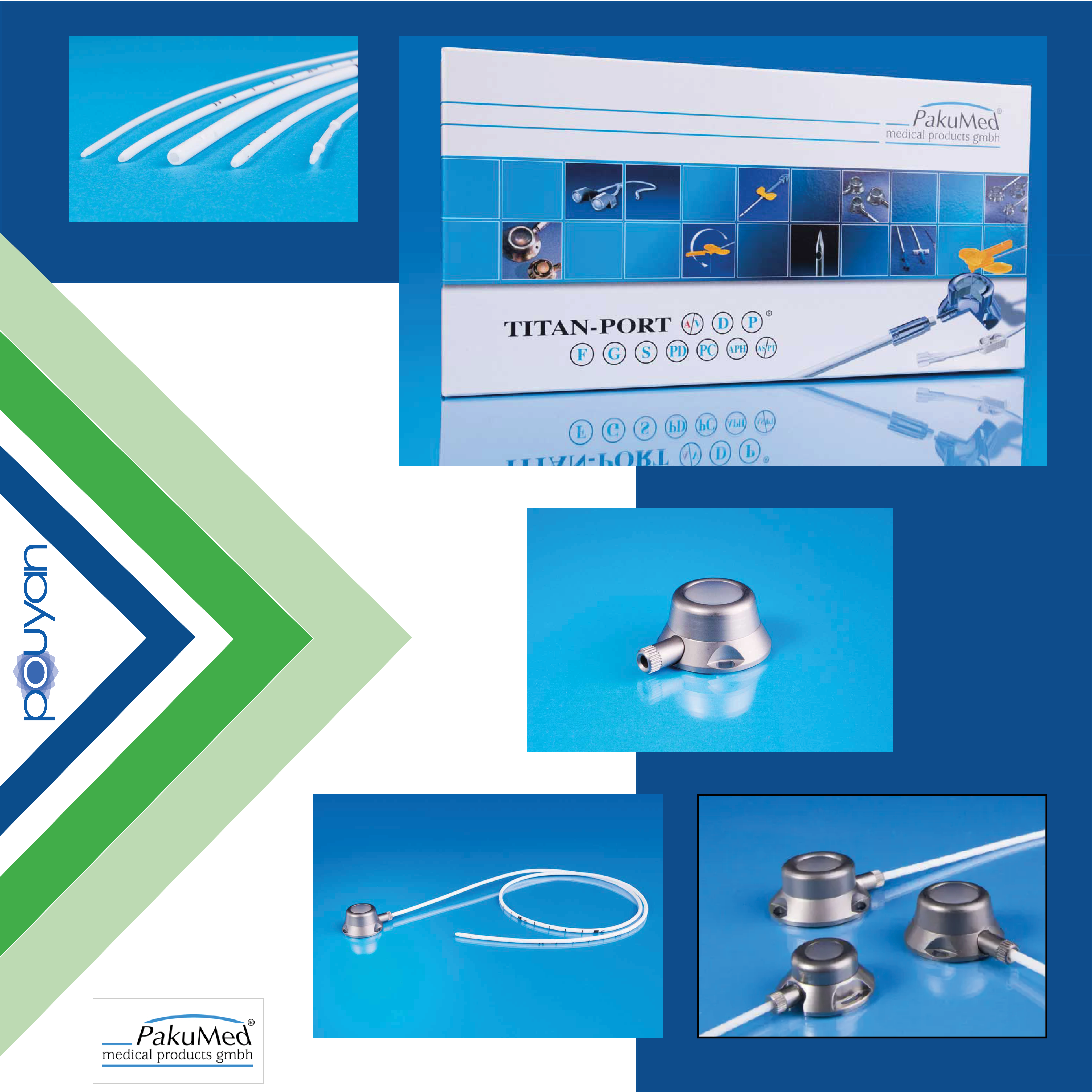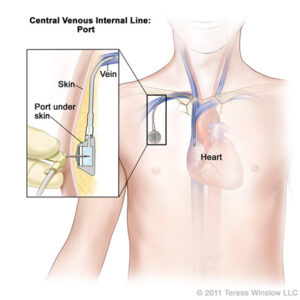
20 Jul Best chemotherapy port
Best chemotherapy port
Experience the best chemotherapy port with dynamic equipment. In order to help respectable patients, Pooyan Tebiz Asia Company has tried to use durable and quality products. Our belief is that the dear people of our country should enjoy modern and more suitable medical services, therefore, the chemotherapy ports of Pooyan Tehzih Teb Asia include two American angiodynamic (Picture 1) and German Pakumed (Picture 2).
Some of the features of the best dynamic chemotherapy ports are:
1- Durability and longevity in the body
2- Superior vortex technology to prevent thrombosis (blood clots)
3- It has a titanium chamber to prevent any allergies
4-Polyurethane catheter
For more information, please call 021-57745

Picture 1 – Angiodynamics chemotherapy port

Picture 2 – Pakumed chemotherapy port
What is a port?
Sometimes it is necessary to use the central veins for serum therapy, when the peripheral veins are destroyed or not accessible, the central veins can be used. A port coat, also known as a port, is an implanted device that allows easy access to the patient’s veins. A port coat is surgically placed completely under the skin and consists of two parts: a chamber (port, reservoir, port) and a catheter (tube) (Figure 3).
Chamber: Soft silicone top acts as a vein access point.
Catheter: A thin, flexible tube connects the port directly to the vein.
Port implantation is a minor procedure performed under local or general anesthesia by a radiologist or surgeon. With one or two small incisions, the catheter is inserted into the vein and connected to the chamber chamber. This procedure is usually completed within an hour. A plain X-ray is used for postoperative imaging to confirm proper port placement. For a few days after the procedure, the patient may feel discomfort at the injection site, which can be managed with NSAIDs.

Image 3 – Placement of the chemotherapy port under the skin and how to access it
Port types
Central venous catheters have different shapes and are classified in different ways. Some are classified according to the place of placement (neck, leg, hand, etc.) and some according to the number of ducts (lumens) or catheters (single duct, double duct, triple duct, etc.). Most sources divide central venous catheters into the following three types:
– Tunnel (usually its lumens are red, blue and white)
– non-tunneled (usually its lumens are white, brown and blue)
– Implantable port
A port can be single-channel or multi-channel. Single-lumen ports are more common and are usually sufficient for patients requiring scheduled intravenous therapy. However, having a multiport is beneficial for patients who often receive multiple intravenous therapies simultaneously. If two intravenous agents on the same line are incompatible, you can infuse both simultaneously in different port lines without complications. A multi-lumen port also allows simultaneous administration of drugs, chemotherapy, blood products, or parenteral nutrition. It is also useful for drawing labs without interrupting the injection.
If your patient is receiving intravenous therapy through the port, especially chemotherapy, you will often check for blood return every two hours during the infusion to confirm proper placement. Port catheters have the potential to crack or tear with excessive injection pressure. It is important to pay attention to the size of the syringe to avoid creating too much pressure inside the duct. The smaller the syringe, the greater the force exerted on the injection. For this reason, many hospital policies do not allow you to use syringes smaller than 10 cc for port line injection and aspiration.
What are the advantages of the port?
1- Vein extraction and frequent painful injections in peripheral veins are avoided.
2- The risk of necrosis and tissue damage is reduced in case of accidental release of chemotherapy drugs from the vein.
3- Permanent and reliable access to the central vein is provided for injecting chemotherapy drugs at a high speed.
4- The possibility of bruising and bleeding is reduced, especially in patients with low platelets.
5- The possibility of long-term chemotherapy is provided.
6- There is no way of communication in terms of pollution penetration to the outside, because the whole system is placed under the skin. The patient can do daily activities with complete freedom and can even take a bath the day after the surgery by placing a waterproof dressing on the site.
7- The port needle can stay in the area for a week to ten days, depending on the location and if there is no inflammation, and there is no need for frequent needling.
8- Peripheral vessels will be prevented from becoming stiff and ropey due to the medicine.
9- The central veins of the body, due to their thickness, are much less damaged than the veins of the hand.




No Comments